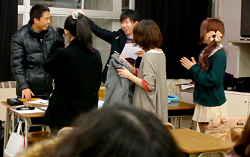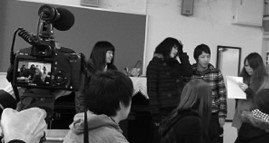Learning is central to the human experience, but the precise definition of learning remains elusive in a clutter of competing ideas. The disparate perspectives covered in this section include the following:
Behaviorism Asserts that environmental stimuli produce behavior change in the individual. Behaviorist instruction attempts to shape the learner's behavior.
Cognitivism argues that learning is an internal process for developing capacity and skills for growth. Cognitivist instruction attempts to structure learning activities to teach individuals how to learn, acquire social skills, and build individual intelligence, learning, and memory [4]. Humanism envisions learning as a means to explore the higher levels of human nature. Humanist instructors attempt to create opportunities for individuals to make their lives better, develop self-control, and freely progress towards and transcend full humanness.
Contextualism sees learning as how people acquire and refine knowledge and skills by constructing meaning with people and context. The constructivist learning environment attempts to provide enriching experiences like social interaction, student activities, and assessments for actively engaging the student in constructing deep understanding.
Integration
While practitioners who adhere to each of these philosophies might reject the other, they don’t need to be mutually exclusive. Integrating the disparate perspectives provides a more complete picture of a complex phenomenon. Through integration, learning is a process by which people change behavior, develop capacity, construct knowledge from experience, and grow toward inherent potential.
However, a definitive understanding remains elusive--especially if attempting to view learning from a perspective of methodological myopia, meaning, through a single perspective. Change seems to be the common element among most philosophies, but the similarities seem to end there. This begs the question: which theory is the correct theory for sound practice in education? The answer may be a resounding “yes,” “all the above,” and then some more.
Blind man and the elephant
Attempting to understand reality through a single perspective can cause myopia, equivalent to the parable of the Blind Men and the Elephant. The parable used by various religions and philosophies demonstrates how different people perceive reality differently depending on their perspectives.
The blind man holding the trunk says the elephant is like a snake. The blind man grasping the tail says the elephant is like is a rope. The blind man holding his palms against the side says the elephant is like a house. The blind man stroking the ear says the elephant is like a fan. The blind man touching the tusk says the elephant is like a spear.
The constructivist might argue that every blind man is correct because they created their own reality. However, objective reality might show that each is correct in his own way but fundamentally wrong in their interpretation of an elephant. Even if they can stop their quarrel to combine their limited perspectives, their understanding is limited by the lack of sight.
Paraphrasing the moral of the story as interpreted by John Godfrey Sacks, methodological myopia, viewing the world through a single lens, can cause people to “rail on in utter ignorance” about something they have not actually seen. Arguing with those who embrace methodological myopia is futile.





![Your brain can keep growing, adapting, and learning at any age, if you are willing to put in the effort [Image: Copilot]](/images/Images/best-years-for-adult-brain300.png)
